Nothing beats taking that first juicy bite of a chilled and perfectly ripe cantaloupe when they come into season. But what’s the proper way to cut one?
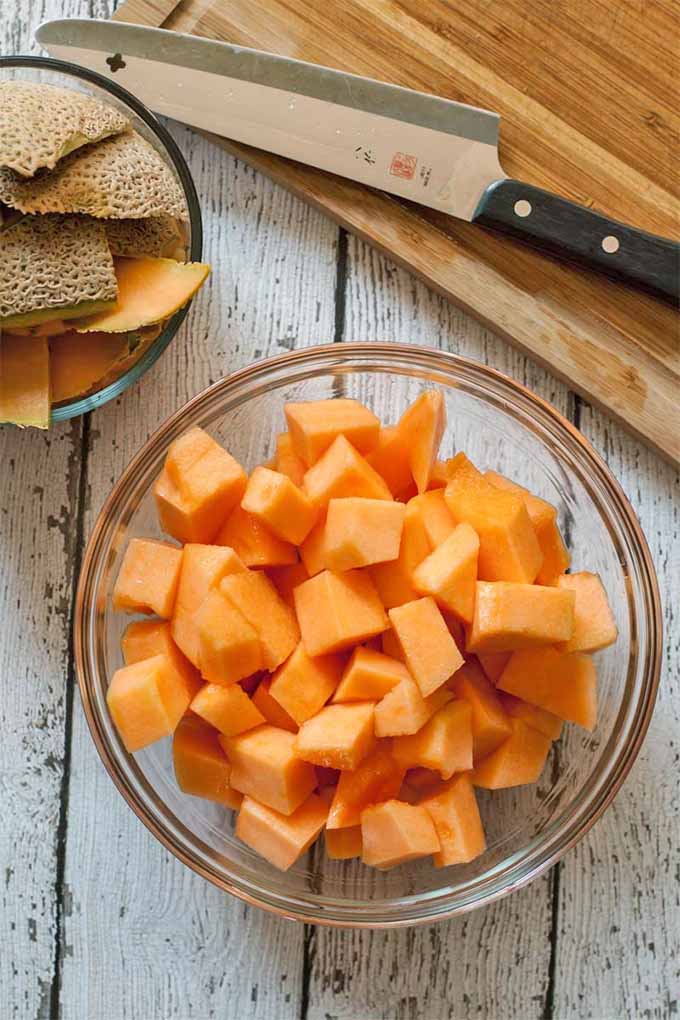
Writing how-to posts is a goal I’ve had for a long time. Some of the easiest kitchen tasks can seem really daunting to new cooks – or even seasoned ones – if they don’t know the proper technique. So, I thought I’d commence with a favorite fruit of mine – the cantaloupe.

Cantaloupe is generally in season from June through August, and summer is the peak time for honeydew melons as well.
With such a short season, it’s best to take advantage of enjoying them while you can. You may see them at other times of year, but the best tasting local melons will arrive in stores in the US in the summertime.
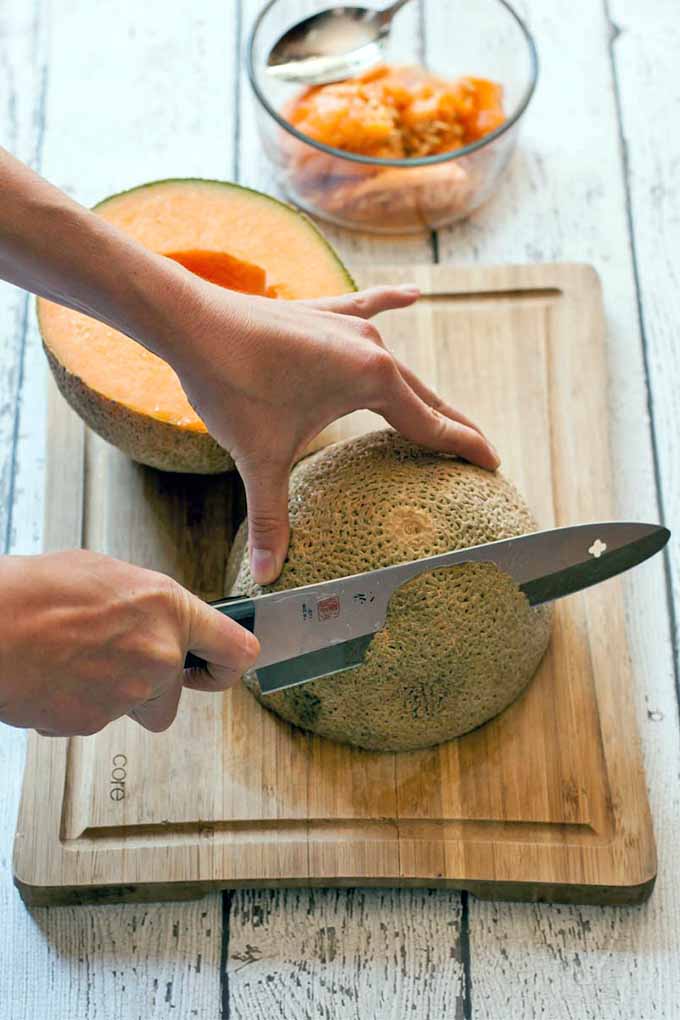
Knowing how to cut a cantaloupe certainly helps. Despite the thick skin and the plethora of seeds, the prep involved is actually very easy.
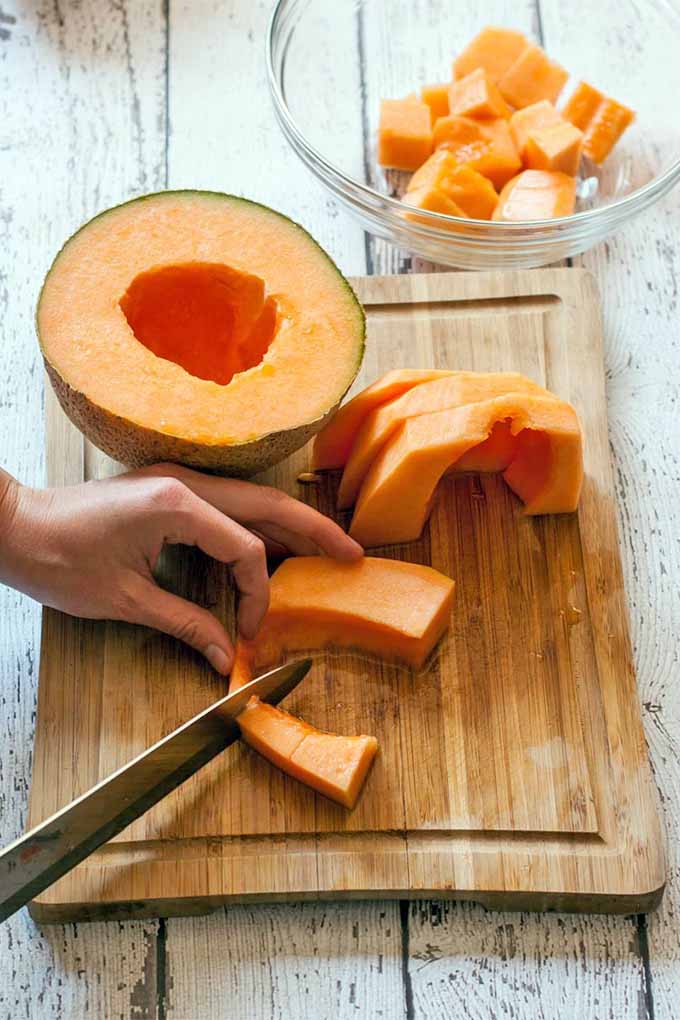
Some how-to posts recommend slicing a ripe melon with the rind on, then chopping it into bite-sized pieces, and removing the rind last. I say, not so fast!
While they claim this avoids the necessity of pulling out a cutting board, I have never:
- seen a ripe cantaloupe that didn’t drip everywhere, no matter how you cut it, or
- ascribed to the belief that using a cutting board and sharp knife is less efficient than trying to do without.
So, without further ado…
Pro Tips for Cutting a Melon
1. Check for Ripeness
First, make sure your cantaloupe is nice and ripe before you take a knife to it. It won’t continue to ripen once you’ve made a break in the skin.
If I buy one from the supermarket, I’ll keep it on the counter at room temperature. To make sure it’s fully ripe, I usually wait a few days, up to a week at most, before getting out my favorite chef’s knife and chowing down.
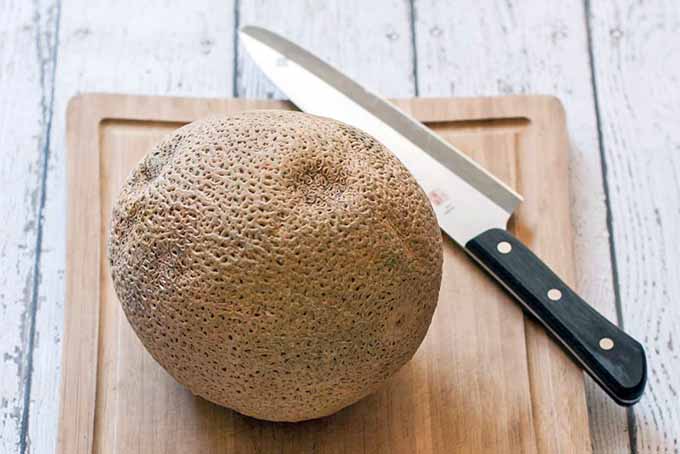
At the farmers market, you may be able to find melons that are already fully ripe and ready to eat – just ask, if this is what you’re looking for! If a cantaloupe or honeydew is ripe but you’re not ready to use it, you can keep the whole melon in the refrigerator.
You’ll know it’s ripe if it is fragrant when you sniff the bottom end opposite where the stem was attached, and when it starts to get the little divots you can see in the image above.
2. Prep
It’s usually best to wait to wash fresh fruit until you’re ready to use it.
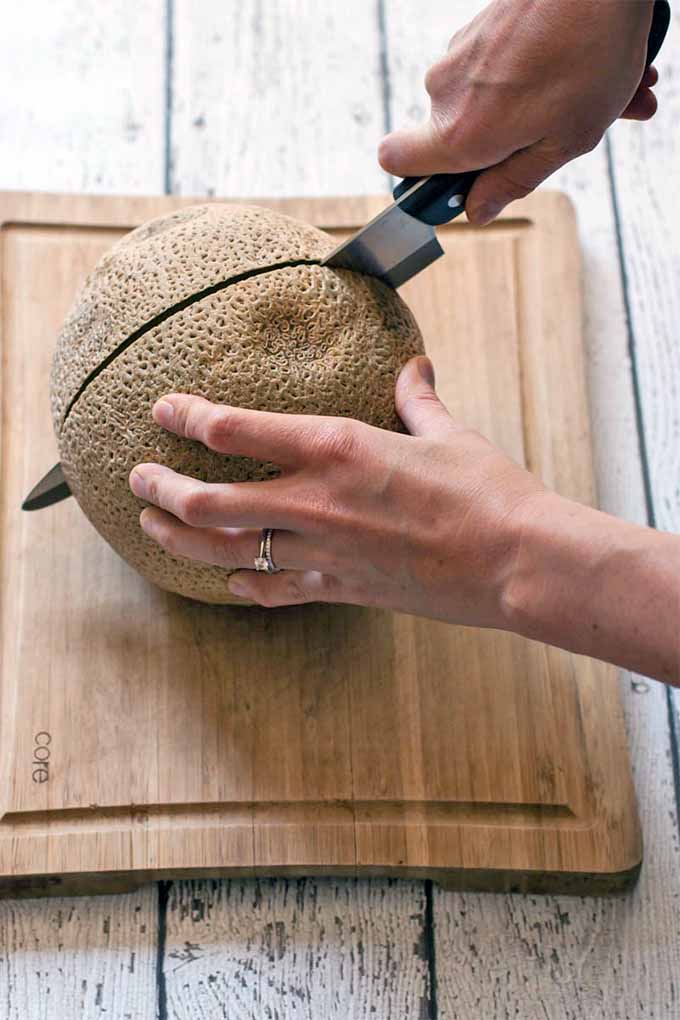
Wash the melon well under cool running water, then hold it steady and slice it in half through what would be the equator, if the stem and the blossom end at the base were the poles of the fruit (i.e. don’t chop through the stem end).
3. Discard Seeds
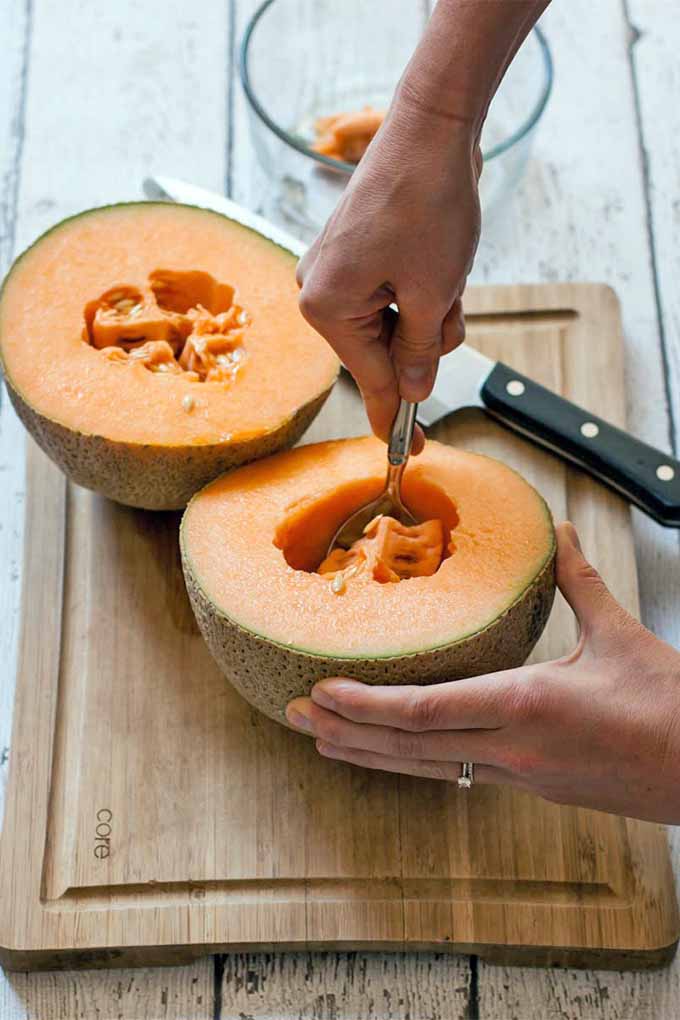
As if you were scraping out a pumpkin or a butternut squash, use a large spoon to scrape out the seeds from both halves. Discard or compost them. To learn how to transform your kitchen waste into useful fertilizer for the garden, check out our guide to kitchen composting for beginners.
4. Start Peeling
Place one half cut-side down on a sturdy cutting board, then begin to slice the rind off using a sharp knife, in about 1.5-inch sections. Try to move your knife with the contours of the melon, removing as little of the actual flesh as possible.
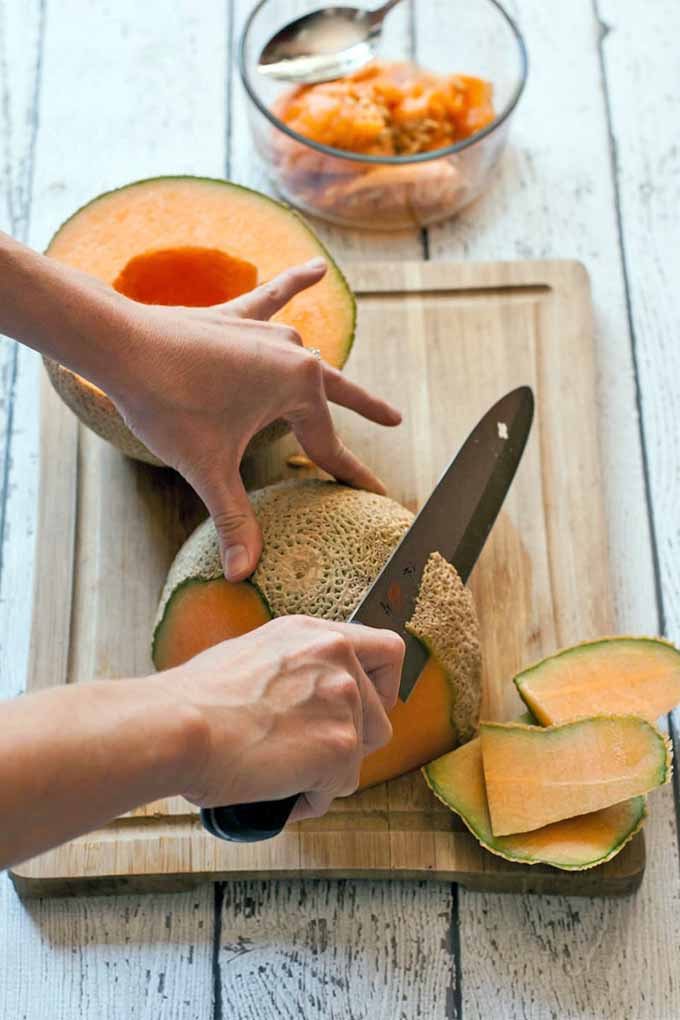
Placing a damp rag or wet paper towels beneath the cutting board when you set it down on your counter can help to hold it in place, preventing it from sliding away from you. And a cutting board with a divot around the edge can help to catch that precious cantaloupe juice, rather than letting it go to waste.
5. Remove End
Cut the end of the rind off a little deeper than you cut the sides, to be sure to remove the stem or blossom end completely.

Please note, it is always best to cut away from yourself, not toward you as is shown in the picture – that was for the photo only!
6. Slice
Next, slice the melon into 1-inch slices all the way across.

If you’re creating a prosciutto-wrapped melon appetizer or another tasty dish that calls for full slices, you can skip the next step.
7. Chop
Finally, take each slice and chop it into bite-sized chunks as shown.
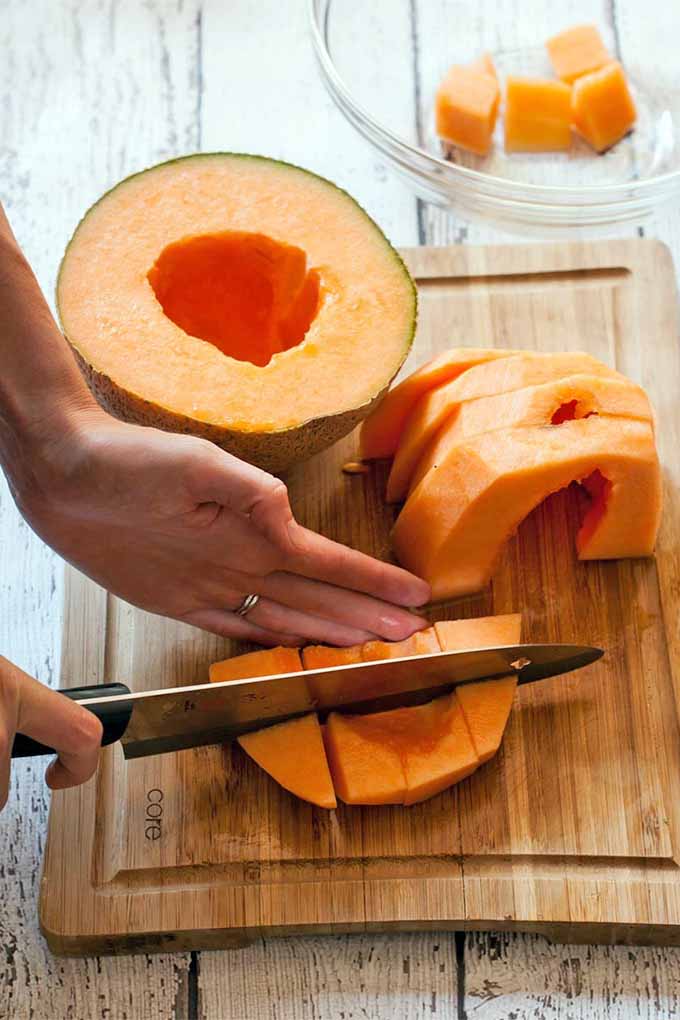
This is perfect for enjoying a fresh melon fruit cup, or adding to a fruit salad or fresh fruit skewers.
8. Repeat
Repeat with the other half, then enjoy your cantaloupe!
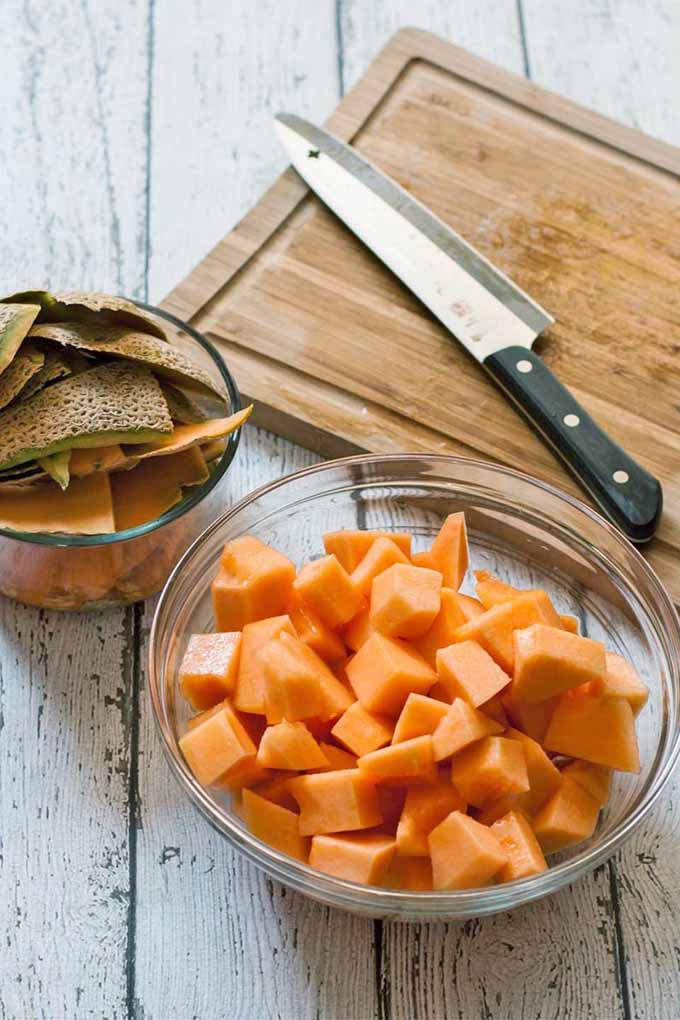
Melon can be stored in the refrigerator for a few days, but it’s best to eat it right away if possible.
Wasn’t That Easy?
And that’s it! Getting a cantaloupe (or honeydew!) ready to enjoy really is so easy.
Next time you’re at the store be sure to grab one, because the season will be over before you know it!
Give these simple steps a shot at home, and let us know how our method holds up. Think you’ve got it beat? Let us know, and share your suggestions in the comments below!
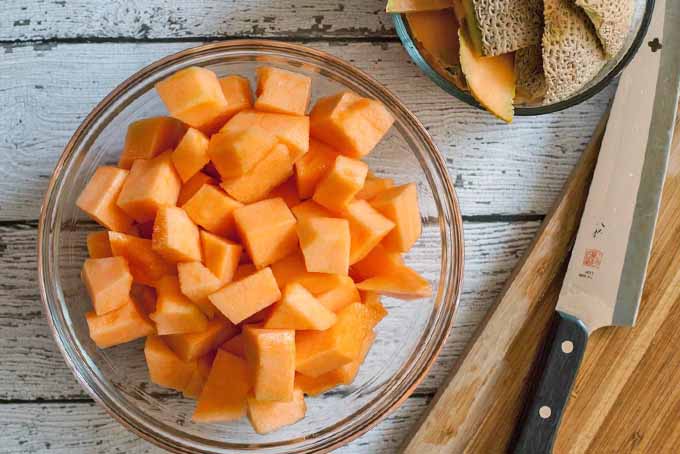
And for more quick tips and how-to instructions for resolving common kitchen mishaps, check out our guides to learn:
- What to do if your chocolate seizes.
- How to fix a dish that is too spicy.
- What to do if you drop raw chicken on the floor.
- How to fix a dish that is too salty.
- What to do if you drop the dessert.
Photos by Raquel Smith, © Ask the Experts, LLC. ALL RIGHTS RESERVED. See our TOS for more details. Originally published on June 11th, 2015. Last updated: July 2, 2019 at 16:00 pm. With additional writing and editing by Allison Sidhu.
About Raquel Smith
Raquel is a whole foods enthusiast, an avid mountain biker, and a dog lover. She works by day at Food Blogger Pro and formerly maintained her food blog "My California Roots" (now merged into Foodal).




yumm cantaloupe is so delicious and refreshing!!!
Thanks, Anna!
So..is store bought cantaloupe pieces just as healthy / yummy tasty / good for you?
Absolutely! They tend to be more expensive and whole melons will last longer in storage at home, but pre-cut melon is just as good for you, and just as tasty, as long as it’s cut when it’s ripe.
Why is store cut cantaloupe so hard and tasteless?
That does tend to be a common problem, Joan. If it’s hard, that’s a good indication that the fruit has been cut before it’s fully ripe. For the best taste and texture, you’ll have better luck selecting your own whole cantaloupe at the store.